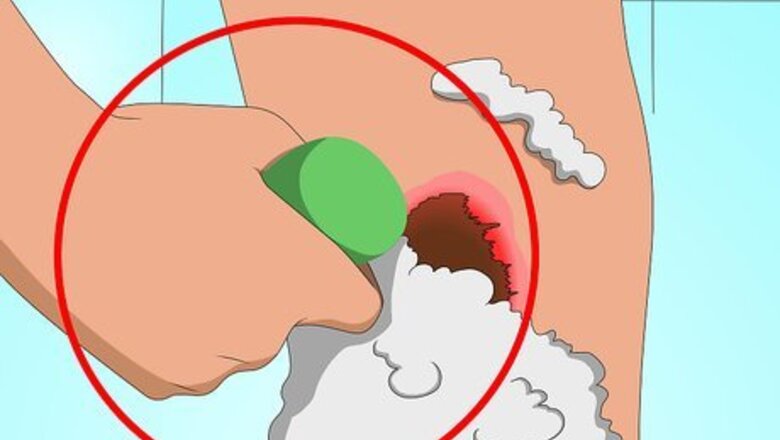
views
- Wash the scabs in the shower every day with a gentle facial cleanser to keep them clean and help them heal more quickly on their own.
- Dab castor or coconut oil on the scab after your shower to gently remove excess dead skin. Work gently, and don't pry any bits off before they're ready.
- Apply plantain leaf paste or aloe vera to the scabs once a day to soothe irritation and promote natural healing.
Getting Rid of Scabs Through Cleansing
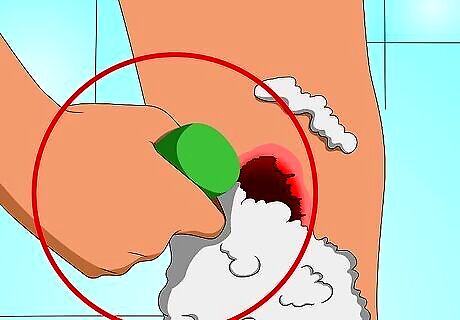
Wash the scabs every day. You should clean the scabbed area twice each day. You can use an acne cleanser or a gentle facial cleanser. Rub gently until dry afterwards. Use a clean washcloth each time you wash your acne scabs. If you reuse the washcloths, you can spread bacteria, which may slow down the healing process.
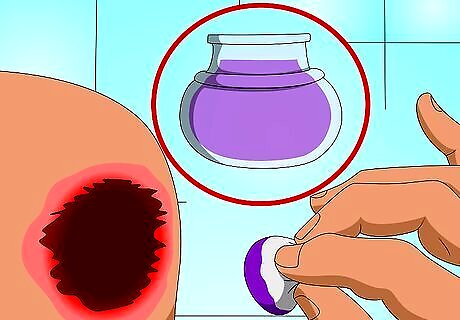
Clean with oil. After cleaning with soap, you can use an oil to help moisturize and remove the scabs. Apply an oil such as castor oil, coconut oil, olive oil, almond oil, mineral oil, or any other oil you wish. Use a clean washcloth to gently work the oil into the scab. Be gentle and use only slight pressure. Rinse well and re-moisturize. This removes bits and pieces of the scab. However, you should only be removing those bits and pieces that fall off easily. Don’t force any scabs off. The scab should fall off within five to seven days. Some scabs may fall off earlier and some may take longer. Just don’t force it.
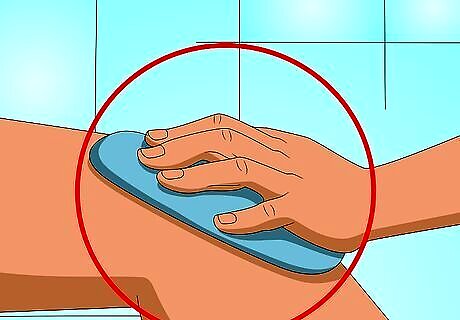
Use a warm compress. Soak a clean cloth in warm water and then ring it out. Press the compress to your acne scabs for about 10 to 15 minutes, twice a day. The moist heat helps to soften the scab, which will help them come off safely and naturally. It also can help the wound to heal. Don’t scrub with the compress. Just hold it against the acne scabs.
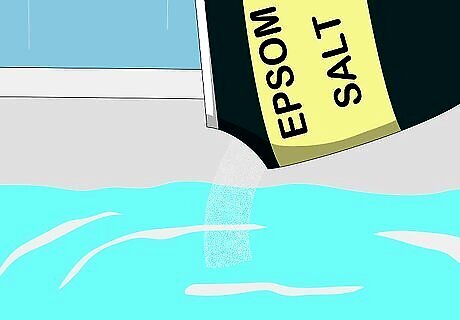
Take a bath with Epsom salts. Soaking in a bath filled with Epsom salts can help moisturize the scabs on your body and promote healing. Fill a tub with warm water and Epsom salts. Soak the areas containing the acne scabs in the bathwater for around an hour. Repeat the process every day until the scab is removed. Avoid putting Epsom salt on your face.
Using Plantain Leaves to Get Rid of Acne Scabs
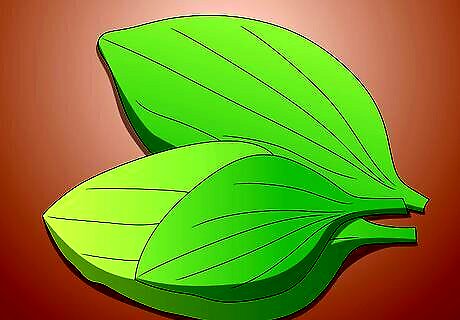
Find plantain leaves. Plantain leaves come from flat, long, narrow-leafed plants that grow nearly everywhere, including most people’s backyards. There are many different varieties, but they all have vertical veins in the leaves. Some people think they are weeds, but they have many medicinal properties. They can be used directly on wounds to protect the wound and promoting healing. The leaves also have antibiotic properties. Most people don’t realize the plant in the backyard is plantain, mainly because there is another food called a plantain, which is a fruit like a banana. Plantain leaves are herbs and different from the cooking plantain, which is a fruit. If you can’t find plantain leaves outside to pick, you can order dried plantain leaves and herbs from natural retailers. You can also buy pre-made ointments and salves made with plantain.
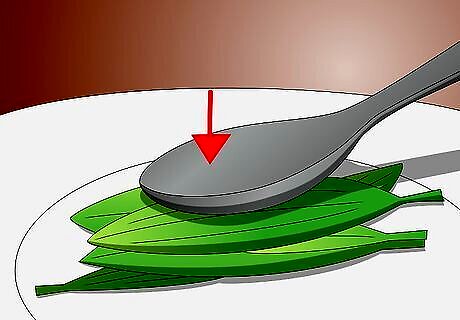
Make a paste with fresh leaves. Pick 10 fresh plantain leaves. Slowly boil the leaves in about an inch of water until the leaves are soft. Remove the plantain leaves and mash them using the back of a spoon. Allow the mash to cool. After the mixture has cooled, add a few drops of an oil of your choice. Good choices include almond oil, castor oil, or mineral oil. You can use dried plantain herbs, mix it with an oil, and boil the leaves to make a paste.

Apply the paste to the scab. When you have finished making the paste, smooth it over the scabs. Then, cover the area with gauze or a bandaid. You can leave it on as long as you like. Put it on overnight and wash it off in the morning, or put it on and leave it until you shower.
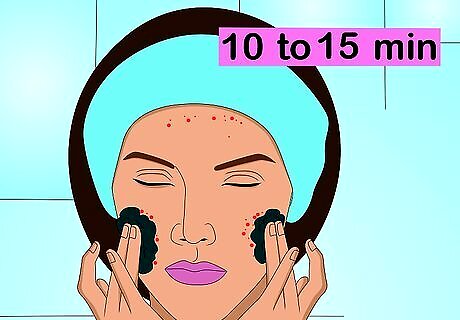
Use the paste on your face. If your acne scabs are on your face, apply the paste to the affected areas two to four times a day. Leave it on for 10 to 15 minutes. Rinse the paste off with warm water and pat your face dry.
Using Aloe Vera For Acne Scabs

Cut a piece of fresh aloe. If you have an aloe vera plant, cut off a small piece. Squeeze the juice from the inside of the aloe sliver over the scab. Allow it to dry without wiping it away. Repeat this four to five times a day. You can buy aloe leaves at many grocery stores in the produce section.
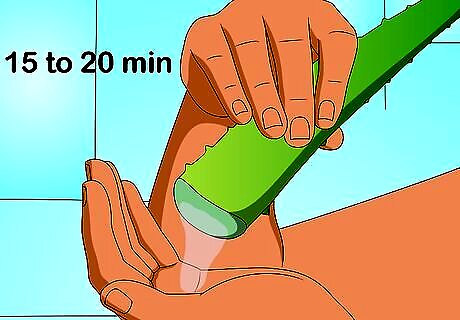
Use an aloe vera gel. If you don’t have fresh aloe, you can buy aloe vera gel instead. Apply the gel to the scab using a Q-tip or a cotton ball. You can leave the gel on, or you can rinse it off after 15 to 20 minutes. Repeat this four to five times a day.
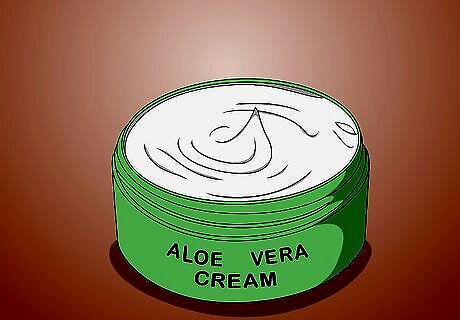
Try an aloe vera cream. Aloe vera comes in multiple types of products. You can use a commercial aloe vera cream, lotion, or ointment product. Visit your local pharmacy to choose the right aloe vera product for your acne scabs.
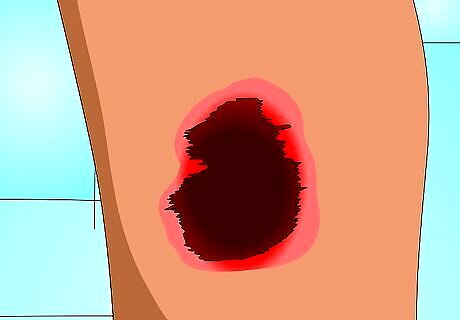
Recognize the need for aloe vera. Aloe vera has been used for many centuries as a healing promoter. It contains anti-inflammatory properties as well as wound-healing promoting properties. The gel helps keeps the scab moisturized, which promotes healing.
Getting Rid of Acne Scabs Through Other Herbal Remedies
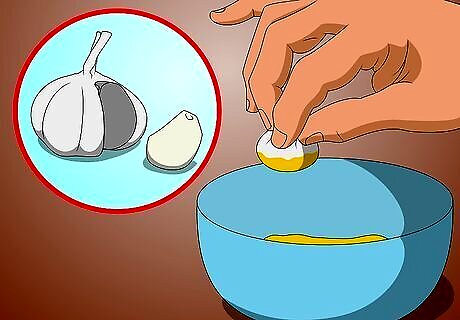
Try onion or garlic juice. Apply a few drops of either onion or garlic juice to the acne scars with a Q-tip or a cotton ball. Allow the onion or garlic juice to dry. Then, if you don’t like the odor, rinse off with warm water. Repeat four to five times a day. You can also leave the onion or garlic juice on overnight. Onion and garlic juice can be irritating for some people. If the onion or garlic juice irritates your skin, use a different method. Both onion and garlic juice has anti-bacterial, antifungal, and healing properties and has been used to promote healing without scarring, particularly after surgery.
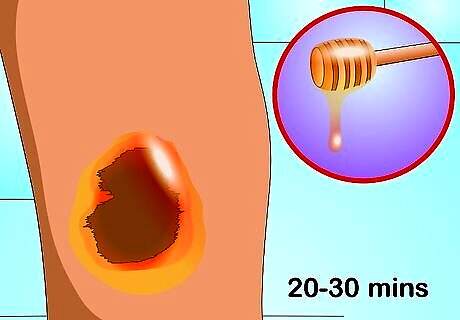
Use honey. Honey has also has been used for centuries to promote healing. Apply ½ teaspoon of honey to the acne scars with a Q-tip or a cotton ball. Allow the honey to stay on the wound for 20 to 30 minutes, covering it with a bandaid or gauze. Rinse off with warm water. Repeat four to five times a day or leave on overnight. Medicinal honeys such as Manuka honey has been the most studied, but you can use an organic honey and get similar results.
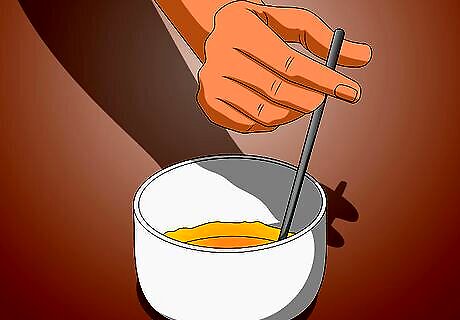
Make a calendula oil mixture. Mix three to four drops of calendula oil with a carrier oil, like almond, castor, olive, or mineral oil. Apply the calendula oil mixture to the scabs with a Q-tip or a cotton ball. Leave it on. Apply four to five times a day. Calendula Oil has wound healing properties. There are a number of calendula creams, lotions and ointments also available that you can use.
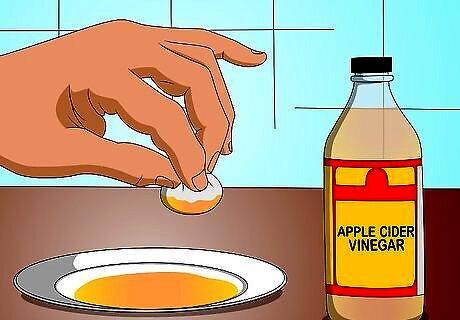
Apply apple cider vinegar. Mix five mL of apple cider vinegar with 50 mL of water. Using a cotton ball, dab it over the scabs. Leave it on for 20 minutes. Rinse gently. Apple cider vinegar promotes new cell growth and has antibacterial, antiviral, and antifungal properties.


















Comments
0 comment